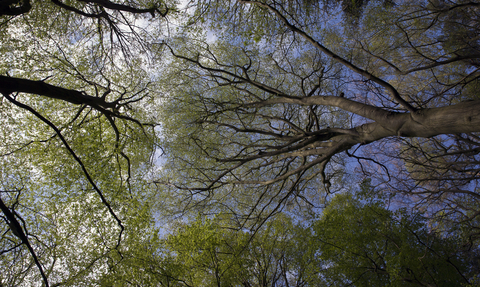
Ringland Hills (credit: Jimmy King)
Our response to the Norwich Western Link road public consultation
During Norfolk County Council's planning consultation, Norfolk Wildlife Trust submitted a detailed response outlining all of our concerns for wildlife, including providing extensive evidence. You can read a summary of our objections, collated by our Planning and Advocacy Manager, below.
NWT are gravely concerned at the proposal and object to it in the strongest terms possible. We believe the application would have disastrous impacts on Norfolk’s wildlife, including the country’s largest breeding colony of barbastelle bats, a protected species, as well as significantly damage ancient woodland and two chalk rivers and their floodplains. We are concerned about the quality of the impact assessment, which appears to significantly underestimate the ecological impacts, and we also have serious concerns about the mitigation proposals offered.
There is a clear need for this application to be determined by Public Inquiry, rather than by the County’s own planning committee. This is due to the national significance of the impacts on protected species (the barbastelle bat super-colony directly on the route, which is being considered for potential future designation as a Site of Special Scientific Interest), and the lack of any requirement for the road in the Local Plan.
The multiple barbastelle bat colonies on and near the route form a super-colony, the largest known in the UK. This legally protected species is highly dependent on old woodlands, including the area of ancient woodland recently listed in the Ancient Woodland Inventory, which the applicant’s surveyors missed in their baseline study. The mitigation proposals for impacts on the bat colonies are not sufficiently evidenced, and expert opinion by a leading independent bat ecologist raises serious concerns regarding the viability of these colonies should the road go ahead.
The planning authority will also have to regard the likelihood of Natural England granting a bat licence, should planning consent be given, and evidence indicates that the applicant’s proposals fall far short of allowing a licence to be granted.
We are concerned at the impacts of the proposal on a range of important habitats, including irreplaceable habitats such as ancient woodland and fen, as well as direct and indirect impacts on the Wensum and Tud chalk rivers. The viaduct across the Wensum Valley would require pillars in the floodplain which would permanently damage the floodplain and impact on the link between the river and the ecologically valuable wet meadows that run alongside it. On the Tud, an important tributary would be crossed by the road, with the tributary being trapped within a culvert.
Recent survey and research has also identified an additional area of ancient woodland adjacent to the route, previously missed by the applicant’s surveyors. This irreplaceable habitat is vulnerable to road pollution and disturbance, and the Council must revise their application in order to assess impacts. The failure of their surveyors to identify this area of ancient woodland also casts doubts on the quality of the habitat surveys for the rest of the route.
